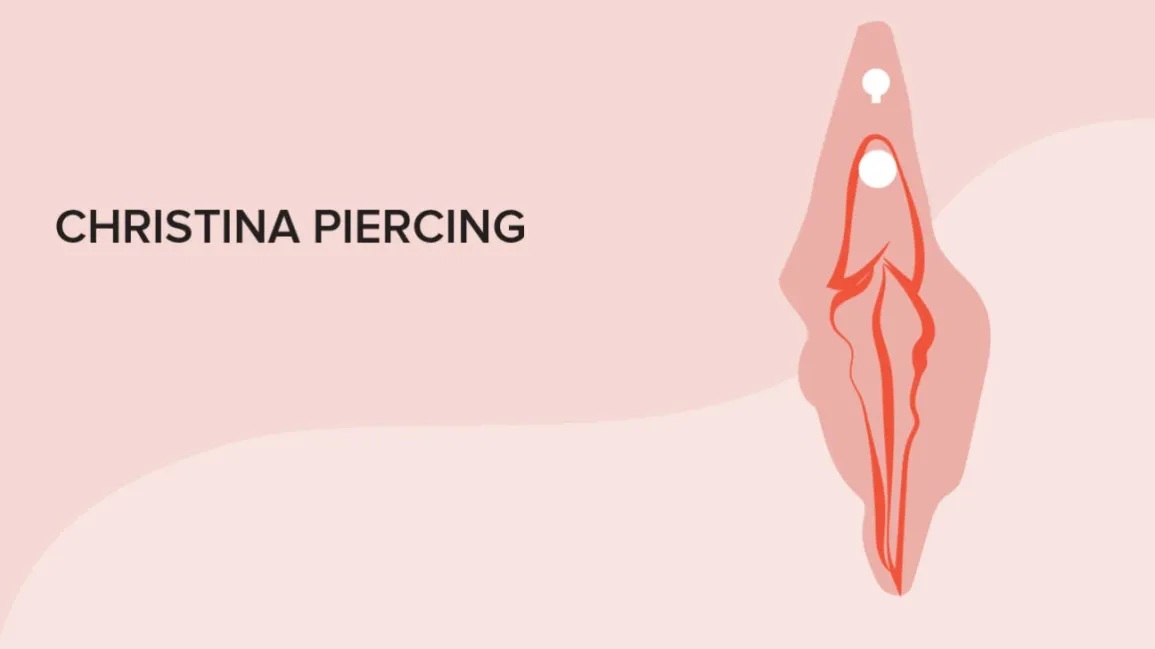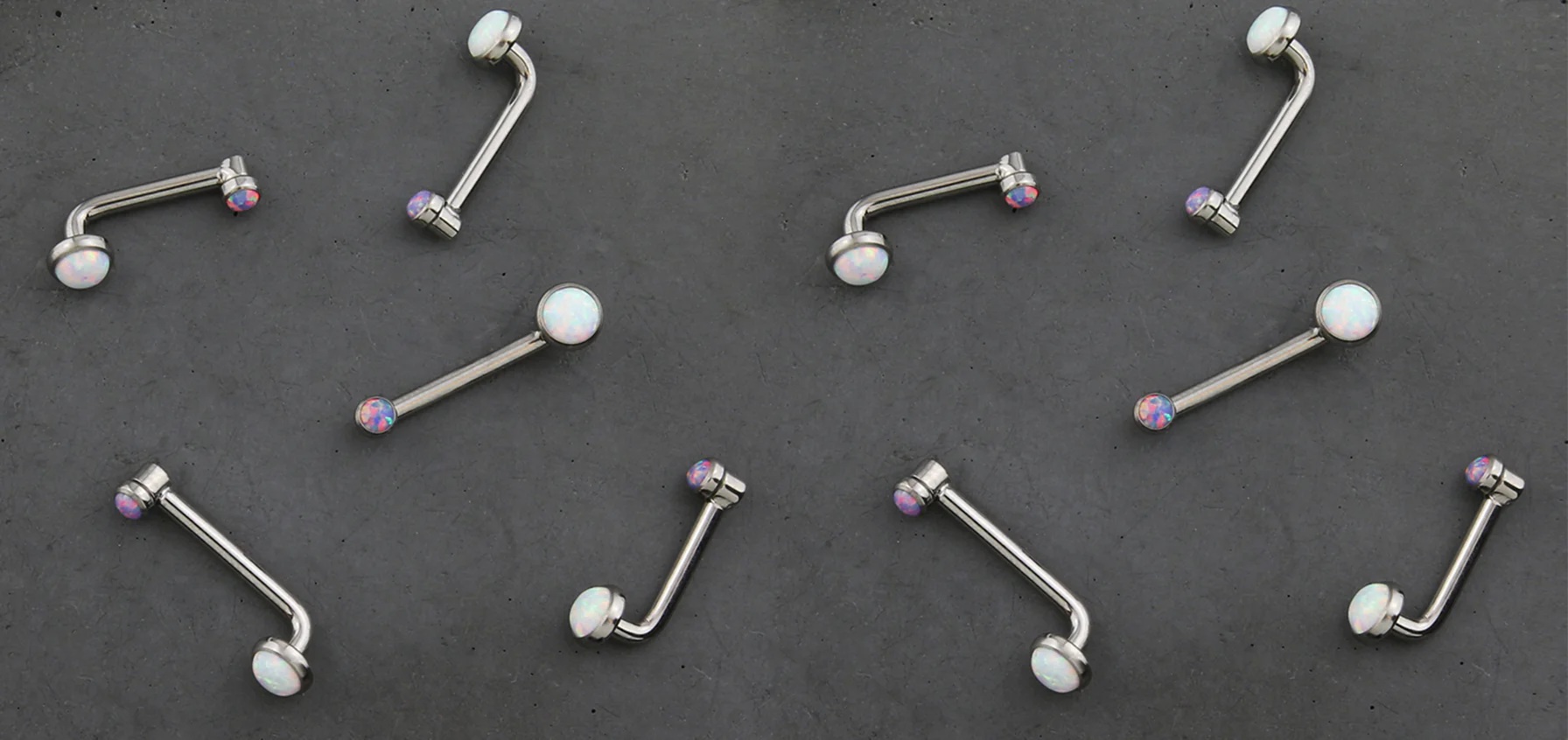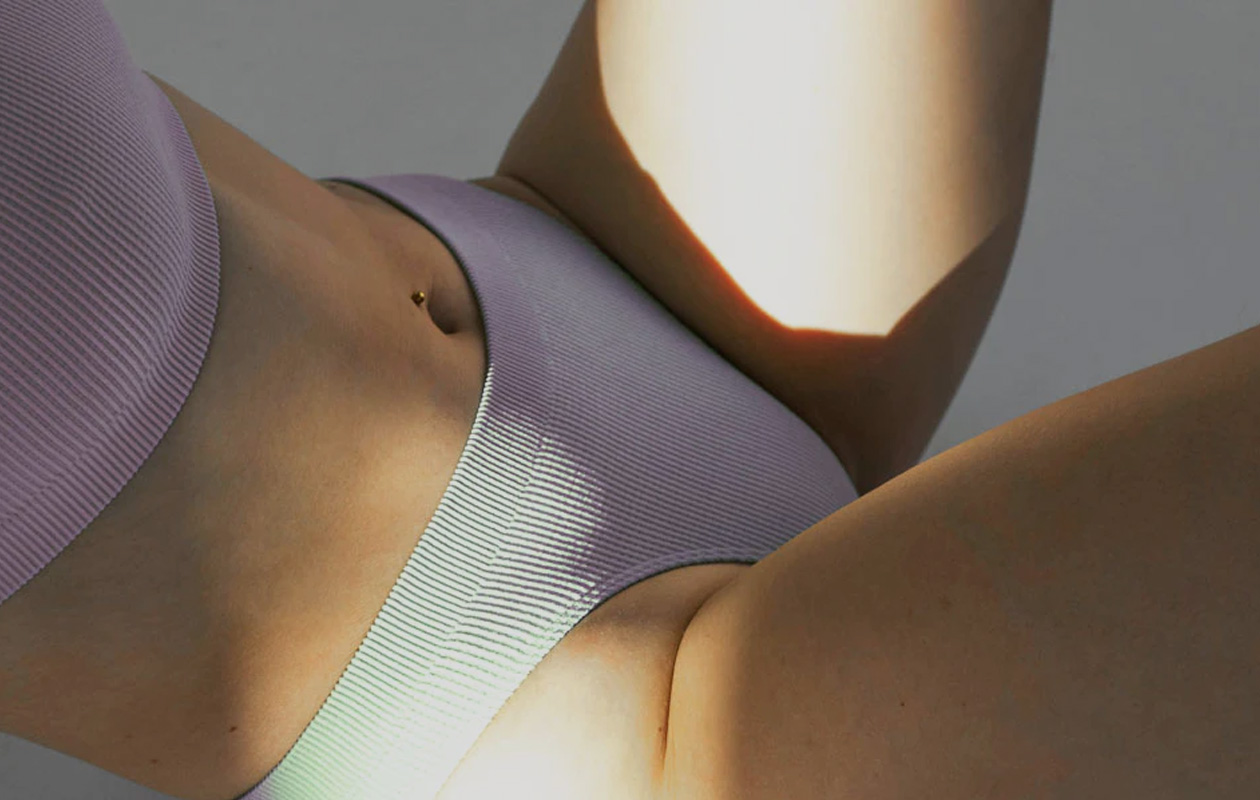In the world of intimate body art, some piercings are chosen for their potential to enhance sensation, while others are chosen for their purely aesthetic, decorative beauty. The Christina piercing belongs firmly in the latter. It is a stunning, elegant, and deeply personal statement—a single, vertical piercing placed at the top of the pubic mound where the labia majora meet. Adorned with a delicate gem, it serves as a beautiful, secret focal point, a piece of personal adornment in the truest sense.
However, the striking beauty of a perfectly healed Christina piercing belies its reputation as one of the most challenging and anatomy-dependent piercings one can get. It is a true surface piercing in an area of constant movement and friction, with an exceptionally high rate of rejection. Its success is a rare triumph, a result of the perfect intersection of ideal anatomy, a master piercer’s skill, and a client’s unwavering dedication.
At PinkTatPier, we approach this piercing with a level of honesty and caution that defines our reputation as London’s best specialists. We recently had a consultation with a client who was captivated by the aesthetic of the Christina piercing London. She came to her appointment with beautiful inspiration photos. Our lead female specialist began the safe & confidential consultation not by reaching for a marker, but by having a frank and compassionate conversation. We explained that the Christina is, in our professional experience, a piercing with a very high rate of failure, even with perfect technique. We then performed a gentle and respectful anatomical assessment. We showed her that while she had some of the required anatomy, she lacked the very distinct, pronounced “bottom shelf” of tissue that is essential to support the lower bead of the jewellery. We explained that proceeding would almost certainly lead to rejection and a prominent scar. While she was disappointed, she was profoundly grateful for the honesty. “Thank you for respecting my body more than my wish for a piercing,” she told us. “That’s why I came to you.
This “anatomy and safety first” philosophy is our unwavering commitment. This guide is an extension of that honest, expert-led dialogue. It is the definitive resource for those seriously considering this advanced piercing, covering the critical anatomical requirements, the significant risks, and how to make a safe & confidential online reservation for a consultation with our experts.

Christina piercing
What is a Christina Piercing? An In-Depth Anatomical Guide
To understand the challenges of this piercing, one must first understand its precise placement and the very specific anatomy it requires.
The Definition: A Vertical Surface Piercing of the Pubic Mound
A Christina piercing is a vertical surface piercing. It is placed at the very top of the vulva, in the cleft where the outer labia (labia majora) begin to meet and join the pubic mound (the mons pubis).
- The Channel: The piercing channel is vertical, running underneath the skin of the pubic mound.
- Entry and Exit: The bottom bead of the jewellery sits in the cleft itself, while the top, visible bead sits higher up on the surface of the pubic mound.
- It is Purely Decorative: It is crucial to understand that the Christina piercing does not provide any sexual enhancement or stimulation. It is a purely aesthetic, decorative piercing. It does not interact with the clitoris or clitoral hood in any way.
The Absolute, Non-Negotiable Anatomical Requirement
This is the single most important part of this guide, and the reason why so many responsible piercers rarely perform this piercing. The success of a Christina piercing London is 100% dependent on having the right anatomy. Many individuals are simply not candidates for this piercing, through no fault of their own.
The ideal candidate must possess a well-defined and pronounced pubic mound that creates a distinct “bottom shelf” or “lip” of tissue at the top of the cleft.
- The “Bottom Shelf”: This pronounced ridge of tissue is essential. It provides a stable and protected place for the bottom bead of the jewellery to sit snugly against the body. Without this shelf, the bottom bead will be pushed constantly forward by the body, placing the entire piercing under immense tension and guaranteeing it will reject.
- Sufficient Pliable Tissue: There must be enough “pinchable,” soft tissue along the proposed piercing channel to create a deep and stable path for the jewellery. If the tissue is too thin or is stretched tightly over the underlying pubic bone, the piercing cannot be safely performed.
An in-person, physical assessment by a true specialist is the only way to determine suitability. At PinkTatPier, this respectful and professional assessment is the cornerstone of our safe & confidential consultation process.
The Correct Jewellery: Why a Custom L-Bar is Essential
This is another critical factor that separates a professional from an amateur. A Christina piercing must be performed with a custom-bent piece of jewellery often called an “L-bar” or a modified surface bar.
- The L-Bar/Surface Bar: This jewellery is shaped with a long vertical post, and a 90-degree bend at the bottom to create a short, flat “foot” that sits under the skin. This design allows the bottom bead to sit flush and the vertical post to align with the tissue, minimising pressure.
- Why a Curved Barbell is WRONG: Attempting to perform a Christina piercing with a standard curved barbell (like navel jewellery) is a recipe for disaster. The “C” shape creates constant, uneven pressure on the tissue, which will lead to certain and often painful rejection, resulting in a significant scar.

Christina piercing
The Reality of a High-Challenge Piercing: Risks and Lifestyle Considerations
At PinkTatPier, we believe in radical honesty. You must understand that even with perfect anatomy and a master piercer, the Christina is a notoriously difficult piercing with a high rate of failure.
The Primary Risk: Rejection and Migration
The location of the Christina makes it a prime candidate for rejection.
- Constant Friction: This is the number one enemy. The waistband of trousers, jeans, leggings, and underwear all sit directly on or rub against the top bead of the jewellery. This constant, daily friction is a major source of irritation.
- Movement and Pressure: Sitting, bending, exercise, and sexual activity all cause the skin in this area to move and stretch, putting stress on the piercing.
- Hygiene and Moisture: Its location can trap moisture and sweat, creating an environment that can be challenging to keep perfectly clean and dry.
The Inevitability of Scarring
Due to the high likelihood of rejection over time, you must be prepared for the fact that a Christina piercing will likely leave a scar. If the jewellery is removed professionally at the first sign of trouble, the scarring can be minimal—two small dots. If left to reject completely, it will leave a more noticeable linear scar.
Our Studio’s Philosophy on Advanced Intimate Piercings:
“The Christina is a piercing we approach with more caution and honesty than almost any other. Our first responsibility is to protect our clients from a procedure that has a high statistical probability of failure. The consultation is a process of education and managing expectations. We have to be willing to disappoint a client by saying ‘no’ to their anatomy, because that honesty is the highest form of professional service we can offer. For the very few who are ideal candidates, we frame the piercing not as a ‘permanent’ addition, but as a beautiful, semi-permanent project to be enjoyed for as long as their body allows. This transparency is the foundation of the trust placed in us as London’s best specialists.” – Our Lead Specialist at PinkTatPier
The Professional Service: From Consultation to Aftercare
If you are one of the rare, ideal candidates, our process is designed to give your piercing the best possible chance of success.
Your Safe & Confidential Online Reservation
Your journey begins with discretion and ease. Our online reservation system allows you to book a confidential appointment for an “Intimate Piercing Consultation” with one of our experienced female specialists.
The In-Depth Consultation and Assessment
Your appointment is a comprehensive, one-on-one session in our private, clinical-grade room. We will perform the full anatomical assessment, discuss the risks and the demanding aftercare in detail, and answer every question you have. If you are a suitable candidate and wish to proceed, we will meticulously mark the placement for perfect vertical alignment.
The Specialist Piercing Technique
The piercing itself is a swift and precise procedure. Using a single-use needle, our specialist will create the channel and insert the pre-sterilised, custom-sized, implant-grade titanium L-bar. The entire process is performed with an unwavering focus on your comfort, dignity, and safety.

Christina piercing
The Long and Demanding Healing Journey
Healing a Christina piercing is a marathon that requires extreme patience and lifestyle adjustments.
Table: The Christina Piercing Healing & Aftercare Guide
| Timescale | What to Expect | CRITICAL Aftercare & Lifestyle Adjustments |
| Month 1-3 | Initial swelling, redness, and significant tenderness are normal. The area is extremely fragile and can be easily irritated. | Meticulous cleaning twice daily with sterile saline. You must wear low-rise bottoms and avoid all tight clothing. No lace underwear. Be extremely gentle when washing and drying. Abstain from sexual activity that puts any pressure on the area. |
| Month 3-9 | The piercing may start to feel more stable, but the internal channel is still very much in the process of maturing. This is the period where most rejections begin to occur due to complacency. | Continue all lifestyle adjustments. You must remain hyper-aware of friction from clothing, exercise, and daily life. Early Warning Signs: Look for the skin over the bar becoming red and thin, or any sign that the piercing is becoming shallower. |
| Month 9-18+ | If the piercing has survived this long, it may be fully healed. However, it will always be considered a “high-maintenance” or “temperamental” surface piercing. | Lifelong Commitment: You must always be mindful of friction and snagging. Monitor for Signs of Rejection: The signs can appear even years later. If you notice more of the bar becoming visible, or persistent redness, contact us immediately for a professional assessment and safe removal to minimise scarring. |
Pricing & Booking Your Confidential Appointment in London
A Christina piercing is a master-level procedure, and our pricing reflects the high degree of skill, the specialist jewellery, and the in-depth consultation time required. A final price quote can only be given during your in-person consultation after a full anatomical assessment.
Your 5 Most Important Questions Answered (FAQ)
1. Why is the rejection rate for Christina piercings so high?
It’s a combination of three factors: 1) It’s a surface piercing, which the body is naturally inclined to push out. 2) It’s in an area of constant friction from clothing and movement. 3) Many people lack the specific “shelf” of tissue needed to properly support the bottom of the jewellery, causing constant tension that leads to rejection.
2. Is there anything I can do to prevent it from rejecting?
The two most important factors are starting with the right anatomy and being pierced by a true specialist using the correct jewellery. Beyond that, the best you can do is follow a perfect aftercare routine and make long-term lifestyle adjustments to minimise friction as much as humanly possible. Even then, rejection is always a possibility.
3. What will the scar look like if it rejects?
If the piercing is removed professionally at the very first sign of rejection, you will likely be left with two small, dot-like scars that will fade significantly over time. If you allow the piercing to reject completely on its own, it will leave a more noticeable, linear scar connecting the two points.
4. Does the Christina piercing enhance sexual pleasure?
No. This is a common and important misconception. Unlike a VCH piercing, the Christina is placed far from the clitoris and does not provide any functional enhancement to sexual sensation. It is a purely aesthetic and decorative piercing.
5. How can I know for sure if my anatomy is right? I’ve looked at pictures and I think it is.
You simply cannot. It is impossible to accurately self-assess for this piercing. The subtle nuances of tissue depth, skin elasticity, and the specific shape of the pubic mound can only be determined by a highly experienced professional piercer through a physical, in-person examination. This is why our mandatory consultation is the most critical and non-negotiable step in the entire process.
Conclusion: A Beautiful Piercing for the Well-Informed
The Christina piercing is a stunning piece of body art for the rare individual who possesses the ideal anatomy and the unwavering dedication to its demanding healing journey. It is a piercing that must be entered into with open eyes and a complete understanding of its semi-permanent nature.
Your Next Step: A Safe & Confidential Consultation
If, after reading this comprehensive and honest guide, you believe you might be a candidate and are prepared for the commitment, the first step is a professional assessment.
We invite you to use our easy online reservation system to book a safe & confidential consultation with London’s best specialists at PinkTatPier. Let us provide you with the expert, honest guidance this beautiful and advanced piercing demands.

